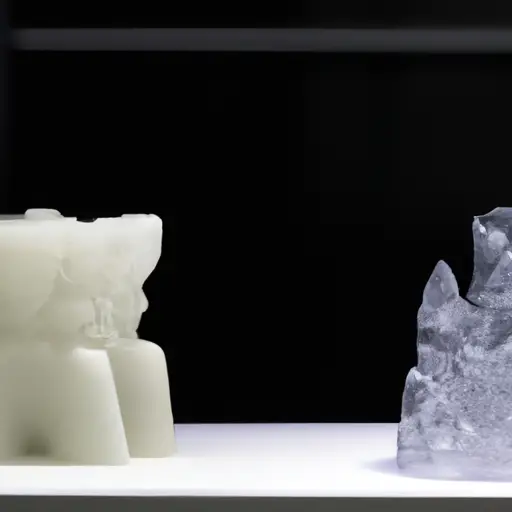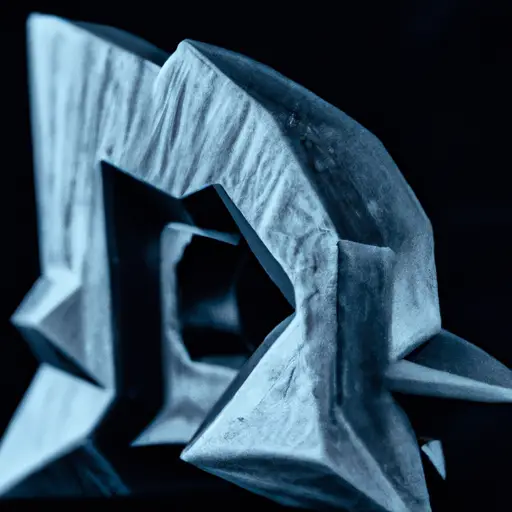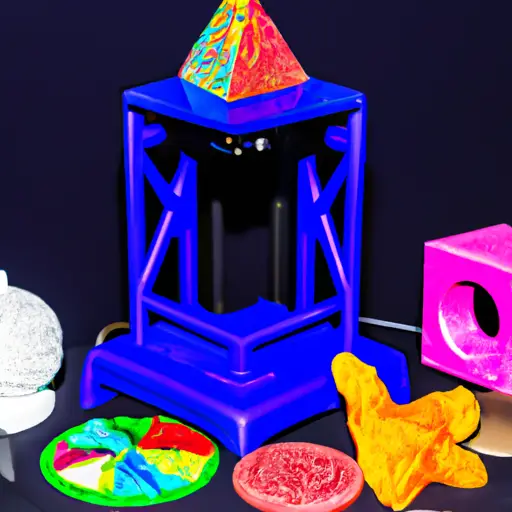In the world of 3D printing, support structures play a critical role in ensuring the successful creation of complex and intricate designs. These structures provide stability and prevent the collapse of overhanging or intricate parts during the printing process.
This article explores the various types, benefits, challenges, and limitations of support structures in 3D printing. Additionally, it delves into design considerations, strategies for optimization, and future innovations in this crucial aspect of the 3D printing process.
Prepare to uncover the secrets behind the role of support structures in unlocking limitless possibilities in additive manufacturing.
The Function of Support Structures in 3D Printing
The function of support structures in 3D printing plays a crucial role in ensuring the successful fabrication of complex and intricate designs. These structures are temporary supports that are added to the design during the printing process to provide stability and prevent the collapse of overhanging or unsupported sections. The support structures are typically made from the same material as the main print, but they are designed to be easily removable after the printing is complete.
Support structure removal is an important step in the 3D printing process, as it can have a significant impact on the final print quality. If the supports are not properly removed, they can leave behind unwanted marks or blemishes on the surface of the print. Additionally, if the supports are not completely removed, they can affect the functionality of the printed object.
To ensure the best print quality, it is essential to carefully remove the support structures without damaging the main print. This can be done using various techniques, such as manual removal with pliers or tweezers, or by using support removal solutions or support removal tools specifically designed for this purpose. It is important to follow the manufacturer’s guidelines for support removal to achieve the desired results.
Types of Support Structures Used in 3D Printing
Different types of support structures are employed in 3D printing to provide stability and prevent the collapse of overhanging or unsupported sections during the fabrication process. Support structure design plays a crucial role in achieving successful 3D prints with complex geometries.
One commonly used type of support structure is the tree-like or branching structure. This type of support structure is generated by the 3D printing software, which analyzes the model and adds support structures where necessary. The tree-like structure consists of thin, connected branches that provide support to the overhanging sections while minimizing the contact area with the printed object. This makes it easier to remove the support structures after the print is complete.
Another type of support structure is the lattice structure. Lattice structures are created by adding a network of interconnected struts or beams that support the overhanging sections. These structures are lightweight and offer excellent stability. Lattice support structures can be designed with varying densities and orientations to optimize support and minimize material usage.
Support structure removal is an important step in the 3D printing process. After the print is complete, the support structures need to be carefully removed without damaging the printed object. This can be done manually using tools like pliers or tweezers, or through post-processing techniques such as water or chemical baths that dissolve the support material.
Benefits of Using Support Structures in 3D Printing
Using support structures in 3D printing not only enhances the stability of complex prints, but also allows for the creation of intricate designs that would be otherwise impossible to fabricate. The benefits of using support structures in 3D printing are numerous and play a crucial role in achieving high-quality prints.
One of the key benefits of support structures is their ability to provide stability during the printing process. Complex designs with overhangs or unsupported parts are prone to deformation or collapse without proper support. The support structures act as a scaffold, ensuring that the print remains intact and maintains its structural integrity.
Additionally, support structures enable the creation of intricate designs with intricate details. By supporting overhangs and bridges, the printer can accurately reproduce complex geometries that would be challenging to fabricate otherwise. This opens up possibilities for creating intricate and aesthetically pleasing objects, such as architectural models, jewelry, and prototypes for intricate mechanical components.
To further emphasize the benefits and importance of using support structures in 3D printing, the following table highlights some key advantages:
| Benefits of Using Support Structures |
|---|
| Enhanced stability |
| Facilitates intricate designs |
| Enables the creation of complex geometries |
Challenges and Limitations of Support Structures in 3D Printing
Significantly, there are several challenges and limitations associated with the utilization of support structures in the realm of 3D printing. While support structures are essential for printing complex objects with overhangs and intricate geometries, they also present certain difficulties that need to be addressed.
One of the main challenges is the removal of support structures after printing. Since these supports are designed to provide stability during the printing process, they often adhere tightly to the printed object. Removing them without damaging the final product can be time-consuming and labor-intensive, especially for intricate designs with numerous support structures.
Another limitation is the impact on print quality. Support structures can leave marks or blemishes on the surface of the printed object, decreasing its aesthetic appeal. This is particularly noticeable in areas where the supports connect to the object or where they are removed after printing.
Moreover, support structures add to the material and time requirements of a 3D printing project. The additional material used to create the supports increases material costs, and the printing time is extended due to the need to print and remove the support structures.
Design Considerations for Support Structures in 3D Printing
When considering the design of support structures in 3D printing, two important factors to consider are support structure optimization and material waste reduction.
Support structure optimization involves designing support structures that provide adequate support while minimizing their impact on the final printed object. This can be achieved by strategically placing supports only where necessary and designing them to be easily removable.
Material waste reduction, on the other hand, focuses on minimizing the amount of support material used during the printing process, thereby reducing costs and environmental impact.
Support Structure Optimization
One important aspect of support structure optimization in 3D printing is the consideration of multiple design factors to ensure the successful printing of complex geometries.
Support structure analysis is a critical step in this optimization process, as it involves evaluating the need for supports and identifying areas of potential weakness or overhangs in the design.
By analyzing the geometry and orientation of the object being printed, engineers can determine the necessary modifications to the support structure to provide adequate stability and prevent deformation or collapse during the printing process.
Support structure modification may involve adjusting the placement, density, or shape of the supports to better accommodate the specific requirements of the design.
This optimization process aims to reduce material waste, improve printing efficiency, and ultimately achieve higher quality prints.
Material Waste Reduction
To effectively reduce material waste in 3D printing, engineers must carefully consider design considerations for support structures and employ strategic modifications.
Reducing material waste is crucial not only for environmental sustainability but also for cost-effectiveness in the manufacturing process.
Support structures are essential in 3D printing to provide stability and prevent deformation during the printing process. However, they often result in significant material waste as they need to be removed after printing.
One way to reduce material waste is by optimizing the placement and density of support structures. By strategically placing supports only where necessary and using minimal amounts of support material, engineers can minimize waste while still ensuring the integrity of the printed object.
Additionally, utilizing soluble support materials that can be dissolved after printing can further improve print quality and reduce the need for manual removal, thus reducing material waste.
Strategies for Optimizing Support Structures in 3D Printing
Effective utilization of lattice-based support structures is vital for optimizing the quality and efficiency of 3D printing processes. Support structures play a critical role in ensuring the successful fabrication of complex geometries and overhanging features.
One key strategy for optimizing support structures in 3D printing is the placement of these structures. By strategically placing support structures in areas where they are necessary to support the print, but not excessive, the amount of material waste can be minimized. This not only reduces the cost associated with material consumption but also decreases the time required for post-processing and support structure removal.
Support structure removal is another important aspect of optimizing 3D printing processes. Traditional support structures are often difficult to remove and can leave behind marks or damage the printed object. To address this issue, new techniques and materials have been developed to make support structure removal easier and more efficient. For example, soluble support materials can be used, which dissolve in a particular solvent, leaving a clean and smooth surface on the printed object. Additionally, lattice-based support structures can be designed in a way that allows for easy removal by incorporating breakaway features or weak points.
Future Innovations in Support Structures for 3D Printing
New advancements in support structures for 3D printing will not only enhance the print quality but also expedite the post-processing phase. As the field of 3D printing continues to evolve, researchers and engineers are constantly developing novel techniques and exploring future advancements to improve the efficiency and effectiveness of support structures. Here are four potential innovations that hold promise for the future of support structures in 3D printing:
-
Smart support structures: These support structures are designed to adapt and change during the printing process. By utilizing sensors and algorithms, smart support structures can detect areas of weakness or excessive material usage and adjust accordingly, optimizing the printing process.
-
Dissolvable support materials: Currently, removing support structures can be a time-consuming and tedious task. However, future advancements may enable the use of dissolvable support materials that can be easily removed by immersing the printed object in a solvent, eliminating the need for manual removal.
-
Biodegradable support materials: In an effort to reduce waste and environmental impact, researchers are exploring the use of biodegradable support materials. These materials would break down naturally over time, reducing the need for manual removal or disposal.
-
Support structures with embedded functionalities: Future support structures may not only provide structural support but also serve additional functions. For example, support structures could be designed with embedded sensors, actuators, or even electrical components, further expanding the possibilities of 3D printed objects.
These future advancements in support structures will undoubtedly revolutionize the field of 3D printing, enabling more complex and efficient manufacturing processes.
Frequently Asked Questions
How Do Support Structures Affect the Overall Print Quality in 3D Printing?
The placement of support structures in 3D printing has a significant impact on print time and material usage. Additionally, they play a crucial role in preventing warping and distortion in complex prints, ensuring overall print quality.
Are There Any Alternatives to Using Support Structures in 3D Printing?
There are alternatives to using support structures in 3D printing, such as support structure optimization techniques. These techniques aim to minimize the need for support structures by optimizing the design and orientation of the object being printed.
What Are the Key Factors to Consider When Designing Support Structures for Complex 3D Prints?
When designing support structures for complex 3D prints, key factors to consider include design considerations and support structure optimization. These factors ensure the stability, accuracy, and efficiency of the printing process.
Can Support Structures Be Reused or Recycled in 3D Printing?
Support structures in 3D printing can be reused or recycled, depending on the material used and the design complexity. Reusability offers cost savings and reduces waste, while recycling promotes sustainability in the additive manufacturing process.
Are There Any Safety Concerns or Risks Associated With Using Support Structures in 3D Printing?
Safety concerns and risks may arise when using support structures in 3D printing. It is important to consider the materials used, as some may emit harmful fumes during printing. Removal techniques should also be carefully chosen to minimize the risk of injury.
Conclusion
In conclusion, support structures play a crucial role in 3D printing by providing stability and preventing deformations during the printing process. They come in various types and offer numerous benefits, such as enabling the creation of complex geometries and reducing material waste.
However, challenges and limitations still exist, including the need for careful design considerations and optimization strategies. As the field of 3D printing continues to advance, future innovations in support structures hold promise for further improving the efficiency and quality of printed objects.



